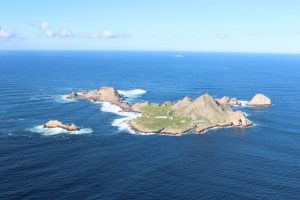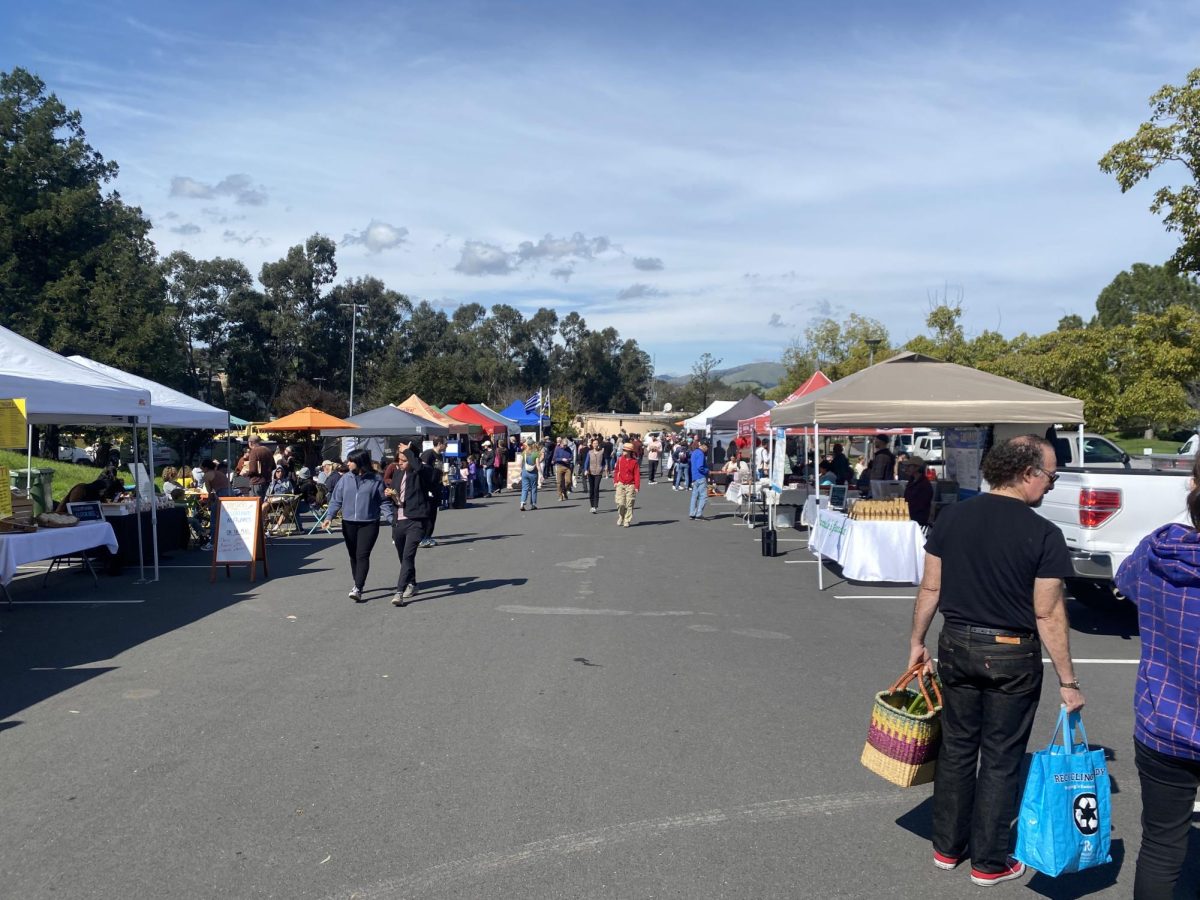Twenty-six miles off the Golden Gate Bridge, some of the world’s most fearsome predators swarm beneath the choppy surface. Whether it’s their 300 serrated teeth or just their name, great white sharks instill an instinctive fear in humans.
Roughly half of the more than 100 annual shark attacks worldwide are attributed to great whites, according to National Geographic.
The Farallon Islands, or Devil’s Teeth, serve as a feeding ground for these fearsome predators off the coast of San Francisco.

“Great whites come to the island primarily during the fall months to feed on juvenile pinnipeds [seals and sea lions],” said Russell Bradley of the Farallon National Wildlife Refuge. “Their preferred prey appears to be elephant seals.”
According to Chris Kelley, executive Director of Farallones Marine Sanctuary, approximately 200 great white sharks migrate to the Farallones annually in the fall months; most of them come from Hawaii.
Great whites are coated with slate-gray backsides, matching the Farallon’s rocky surfaces, but their most recognizable feature is their white underbelly. According to Bradley, they grow to an average of 15 to 20 feet and weigh up to 4,000 pounds.
Unlike most sharks, but similar to whales, great whites can leave the water completely, breaching the surface when attacking prey, according to National Geographic.
The attacks at the Farallones are most abundant during the fall months.
According to Michael L. Domeier, who works at the Marine Conservation Science Institute, great whites are able to sense the tiny electromagnetic fields generated by other animals before attacking.
“White sharks are visual predators,” Domeier said. “They swim beneath their prey and attack from below. Once they’ve bitten their prey, they then back away and let the animal die of blood loss before eating. By waiting for their prey to die, they reduce the chance they will be injured by the teeth or claws of the seal.”
Bradley witnessed an attack very early in the year.
“There are shark attacks regularly during the fall, but this last March, on the 30th, I was on the island when we saw an extremely rare March shark attack an elephant seal, which lasted 45 minutes. It was very unusual,” Bradley said.
An app created by the Stanford University research team allows users to detect the comings and goings of great white sharks along the Northern California coast.
The app, named Shark Net, brings users face-to-face with individual sharks and provides notifications when users electronic tags are detected by underwater listening stations.
Two types of electronic tags, ultrasonic and satellite transmitters, are hidden within a small portion of seal meat and then attached to the stomach of a shark.. The satellite tag is darted into the dorsum of fin while the shark is being lured to the side of the research team’s boat with a seal-shaped decoy.
“New tagging data shows that while there may be one to two individuals present at the islands nearly year round, most sharks are not present at the island during the winter, spring, and summer months – some even travel across the Pacific to Hawaii,” Bradley said.
Currently, the majority of the sharks carry an acoustic tag, according to Dormeier. Although acoustic tags notify the user when a shark swims past an acoustic receiver, they don’t allow the user to track the sharks in all locations.
Slightly inland, Bradley is able to watch and document the attacks from his temporary home, which is in the original lighthouse keeper’s house. Bradley and many others travel back and forth to the mainland, living on the islands for a couple months at a time.
Atop the lighthouse sits a live streaming web camera to observe breeding bird colonies, seals, sea lions, and great white sharks, which was provided by the California Academy of Sciences, the U.S. Fish and Wildlife Service, and PRBO Conservation Science.
According to Bradley, the islands have a long checkered past. They were first landed on in the 1500s by explorer Juan Rodriguez Cabrillo and then again in the 1800s during the massive exploitation of wildlife colonies, when seal fur hunting and egg collection from Common Murre birds during the gold rush plummeted the seabird and pinniped populations.
Bradley added that, in the mid 1800s, the island became one of the first lighthouses on the West Coast and the Coast Guard was present for over 100 years. After the automation of the lighthouse in the early 1970s, the Coast Guard left, right around when the South Farallon Islands joined with the Farallon National Wildlife Refuge.
According to Bradley, around that time, Point Blue Conservation Science (the Point Reyes Bird Observatory) entered into a cooperative agreement with the US Fish and Wildlife Service and has been working on the island since April of 1968.
“Great white sharks have always been a mystery at the islands. We never know how many there actually are or where they all go,” Bradley said.

















